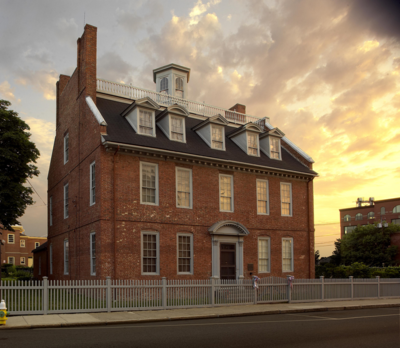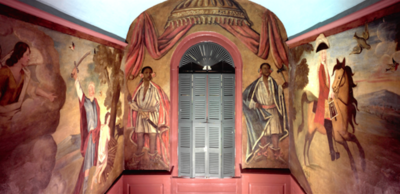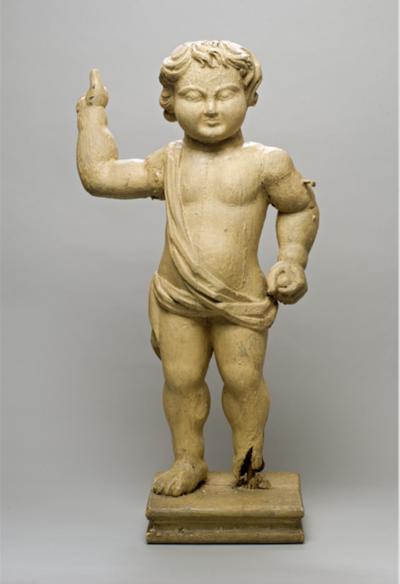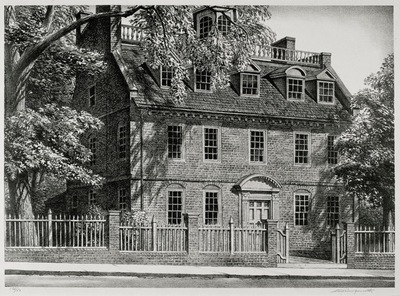Three Centuries of Art and History at the Warner House

The Warner House. Photo credit Jack Bingham.
By Olivia J. Kiers
2016 is a landmark anniversary for the Warner House, a rare, 18th-century urban brick mansion in Portsmouth, NH, that is celebrating its 300th birthday with an array of special events. These events include a captivating exhibition, The Warner House at 300!, at Discover Portsmouth, the museum of the Portsmouth Historical Society. Co-curated by the Warner House’s 300th Celebration Committee member Robert Chase and Richard Candee, exhibitions chair at the Portsmouth Historical Society, the exhibition brings together a wealth of artifacts from the house’s long history, as well as artworks featuring the house from across the centuries.

Nehemiah Partridge, attrib. Staircase murals. c. 1718-1720. Credit: Richard Haynes.
“The Warner House is special because it is an early house—from 1716—but also because there simply aren’t many of these high style houses left in New England,” explains Candee. “The Warner House is a survivor.” For example, among the architectural elements that have survived are a series of intriguing murals on plaster, which according to Candee are the oldest known murals in New England. Built for the merchant captain Archibald Macpheadris by English master builder John Drew, the Warner House is also unusual in that the builder’s notebook still exists, revealing much to historians about the original ornamentation, which was lavish for its time. One of Candee’s favorite objects in the exhibition is a pair of three-foot-tall putti that were possibly part of the original front doorway.

John Drew, attrib. Wood carved and painted putto. Portsmouth Historical Society.
While historically significant (the house is a registered National Historic Landmark), the Warner House is also a long-standing muse for artists. The Warner House at 300! exhibits a variety of artworks that feature the house, from the New York painter Worthington Whitford’s pre-Civil War painting of the hallway (invaluable to historians for charting the house’s decorative history) to several 20th-century works that capture the Warner House’s continuing charm after it was converted into a house museum.

Stow Wengenroth. Warner House. 1962. Lithograph. 10 1/4 x 15 3/4″. The Warner House Collection.
When asked if it was a challenge to create an exhibit that covers 300 years of architectural history, artifacts and artwork, Candee said not necessarily. “We do have a limited space [at Discover Portsmouth], which imposed some natural constraints to make sure that the presentation [of the exhibition] added up for the visitor. The hardest thing was picking out what items to show from the house’s collection. We didn’t want to rob it of all its contents! There’s certainly more to be seen; we hope this exhibit encourages more visitors to the house itself, too.”
The Warner House at 300! runs through September 2. Visit http://portsmouthhistory.org/the-warner-house-at-300/ for exhibition details, and http://www.warnerhouse.org/ to learn more about the house and other events.
